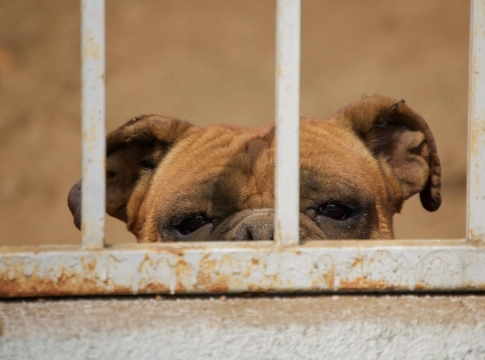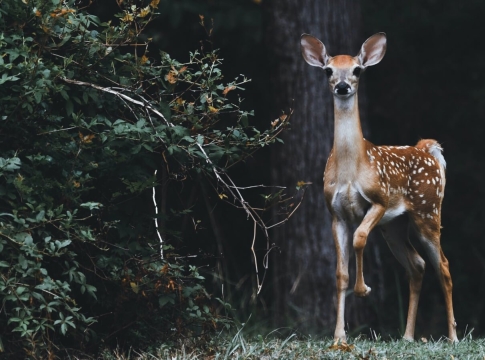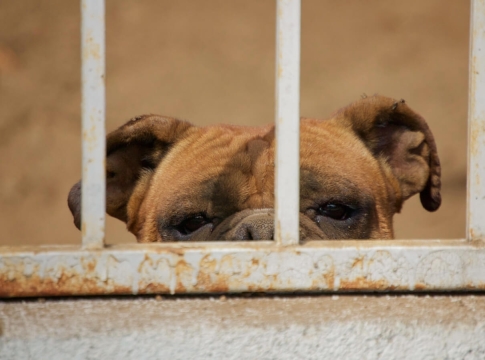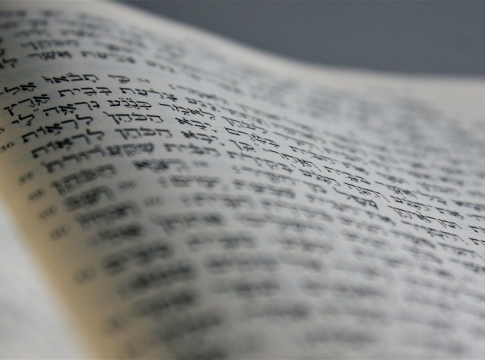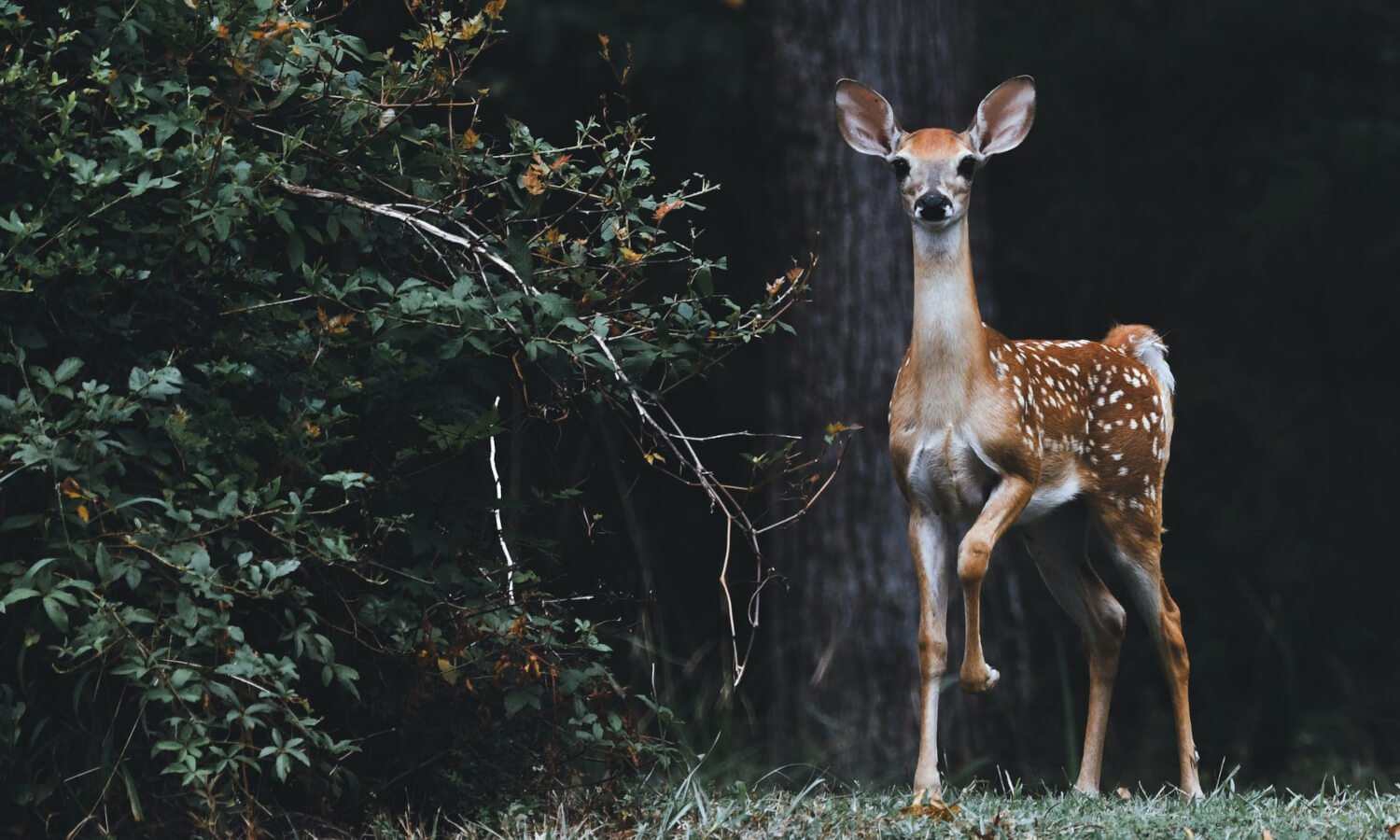
Like a deer …
There are many images in the Bible that are used to convey certain aspects of God’s Word to man. In the majority of cases, these are images from nature or everyday life. They are images that people in biblical times understood because they were familiar. Thus, one knew the work of the potter and could understand the potter image (Jeremiah 18, 19), as well as the image of the shepherd (Psalm 23) and of the ox and donkey who know owner and manger (Isaiah 1:3). It was also known that stains of scarlet were indelible and that the pure white snow on Hermon disappeared into the sun (Isaiah 1:18); therefore, the divine promise of perfect forgiveness of sins by repentance to God could be understood. That call to come still rings out!
“Ayyal” and “ayyala”
In the text of the Hebrew Bible, אַיָּל / “ayyal” occurs with the feminine form “ayyala” (hind). In biblical times, the deer lived in a wide area of the ancient Near East. Remains of the bones of the red deer have been found in Lebanon, as well as at Tel Dan; but especially in the area of the Mount Carmel archaeologists have found many remains of these animals, such as skulls and bones. The archaeological finds also show that the deer was used a lot as food, given the meal remains that were found. The three different species of the “ayyal” / deer family that lived in the area of Israel have become extinct because of much hunting. Until the end of the 19th century, many deer lived on Mount Carmel …
“Ayyal” as an image
It is hardly strange that the Scriptures frequently use the image of the deer, an animal that has long appealed to humans. After all, in the Old Testament, a deer, or “ayyal,” was a familiar and accepted representation of nature. It is apparent that various facets of this exquisite animal stand out as an illustration. Thus, the appealing image of the deer serves as the foundation for multiple spiritual truths that are taught to us.
A deer, or “ayyal,” is an animal that is considered ritually clean by the Torah (Deuteronomy 12:15; 12:22; 14:5; 15:22). The animal gained notoriety as a representation of grace and agility. Given that Jacob foretold that the tribe of Naphtali would be represented by a doe or “ayyala” released loose, the deer was most likely the tribe’s symbol.(verse 21, Genesis 49).
The deer is a picture of beauty—a very attractive, slender animal. The animal is also associated with speed because of its extraordinarily smooth and quick movement and its high top speed. A deer, sometimes known as a “ayyal,” can effortlessly leap over fences, bushes, and other obstructions. In an emergency, it can even navigate barriers on its escape route. It also understands when and when to take a hard stand. The animal now embodies agility as well. A deer, or “ayyal,” prefers peaceful surroundings where the herds are withdrawn. An instructive and illuminating image.
“Ayyal” in prophecies
Through the power of the Holy Spirit, Isaiah may foretell the coming of God to redeem the desert and its blossoming, saying, “Then the lame man shall leap like a deer / “ayyal”…”(Isaiah 35:6–15). Through God’s promised salvation, the weak and defenseless will one day become strong, quick, and victorious, as this prophetic vision suggests. That is the future of God.
Habakkuk also employed the powerful metaphor of a deer, or “ayyal.” The prophet lamented the terrible fate that would await Israel due to their disobedience to God (Habakkuk 1:1-11). He discovered how to surrender to God and to carry that heavy weight of confusion and doubt. In the middle of such suffering, he learned to pray by giving himself over to God with trust: “I will quietly wait for the day of trouble.” My power comes from God, the Lord; He gives me feet that like those of a deer or “ayyalot”[1]. 3:1; 16–19 in Habakkuk. In difficult and trying times, Habakkuk’s prayer instructs us to pray like nimble jumping “ayyal” or deer, secure in the Lord, the Rock.
“Ayyal” and prayer
Sadly, the deer was frequently driven to locations with limited food. Jeremiah is depicted in this painting in sadness, lamenting how Jerusalem has been destroyed by her own guilt. “Her princes have turned into ayyalim, or deer, who cannot find pasture.” (Lamentations 1:16). A person may find himself in a desert region devoid of water and meadows for a variety of reasons. Anxiety, depression, sickness, anxiety, and a host of other things can cause us to feel parched and desolate. However, the Lord hears those who are praying to Him like weary, thirsty deer everywhere and always: “As a deer / “ayyal” pants for flowing streams, so pants my soul for you, O God.” (Psalm 42:2).
The same as He did in David’s life, God grants their requests. He had learnt to run to God like a deer when he needed forgiveness, support, or protection after a lifetime of sins, tribulations, and difficulties. He can thereafter sing, “This God—His way is perfect; and who is a rock, except our God?,” in a song of gratitude. He gave me “ayyalot” feet, similar to those of a deer.Psalm 18:32–33; 2 Samuel 22:31–34).
[1] ayyalim = plural masculine and ayyalot = plural feminine
Remarks:
- A ceremonially pure animal, the Old Testament deer, or “ayyal,” was permitted to be consumed “… in accordance with the blessing of the LORD your God.” (Leviticus 12:15–22; 14:5–15:22).
- Unlike the female deer, which is antlerless, the male deer, known as “ayyal,” has powerful, branching antlers. Unlike the hollow horns of the gazelle, these antlers are huge.
- The deer has an exceptionally graceful walk, is exceptionally thin and well-built, and is renowned for being a good jumper.
© Copyright dr. Annechiena Sneller-Vrolijk
